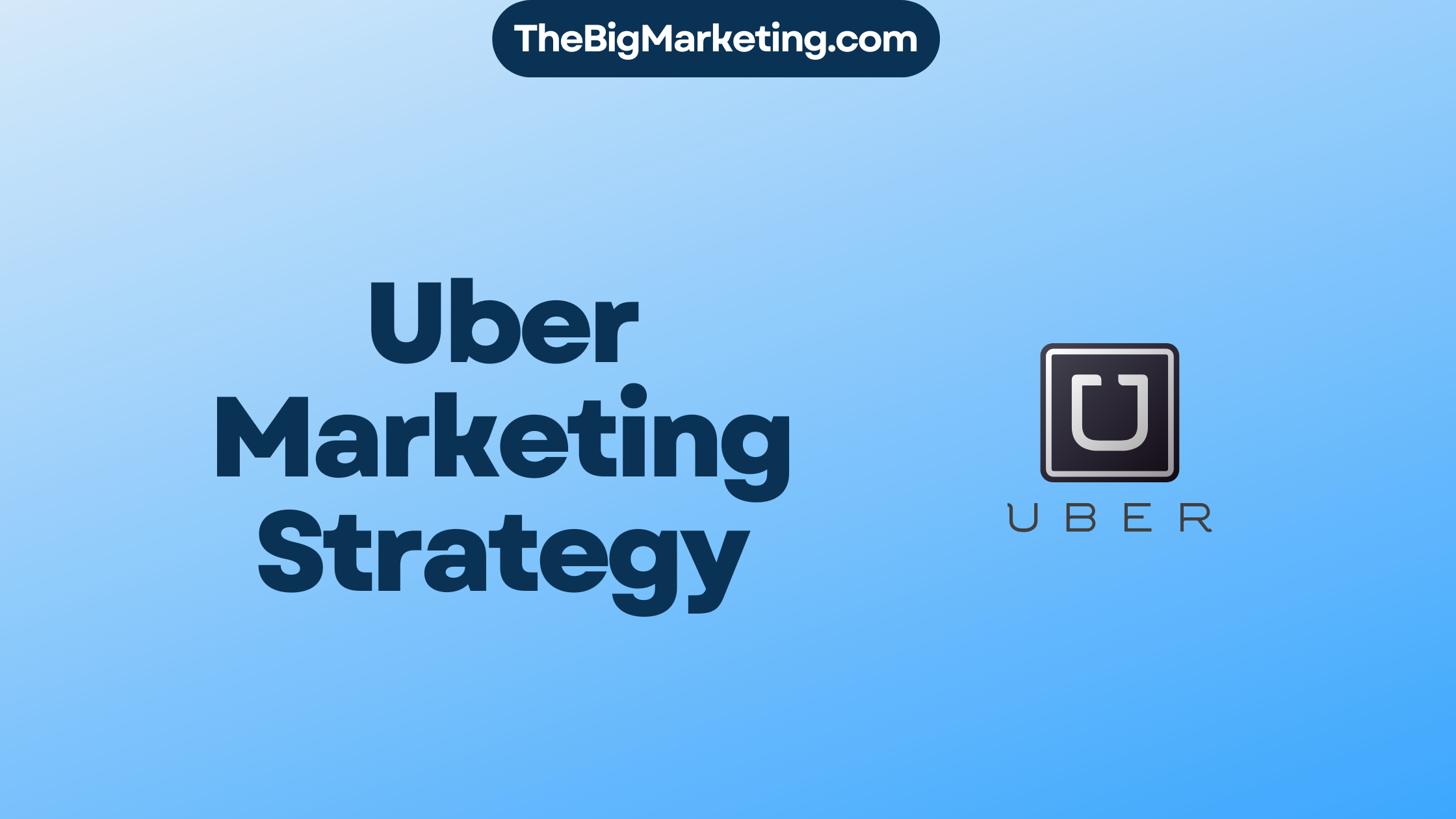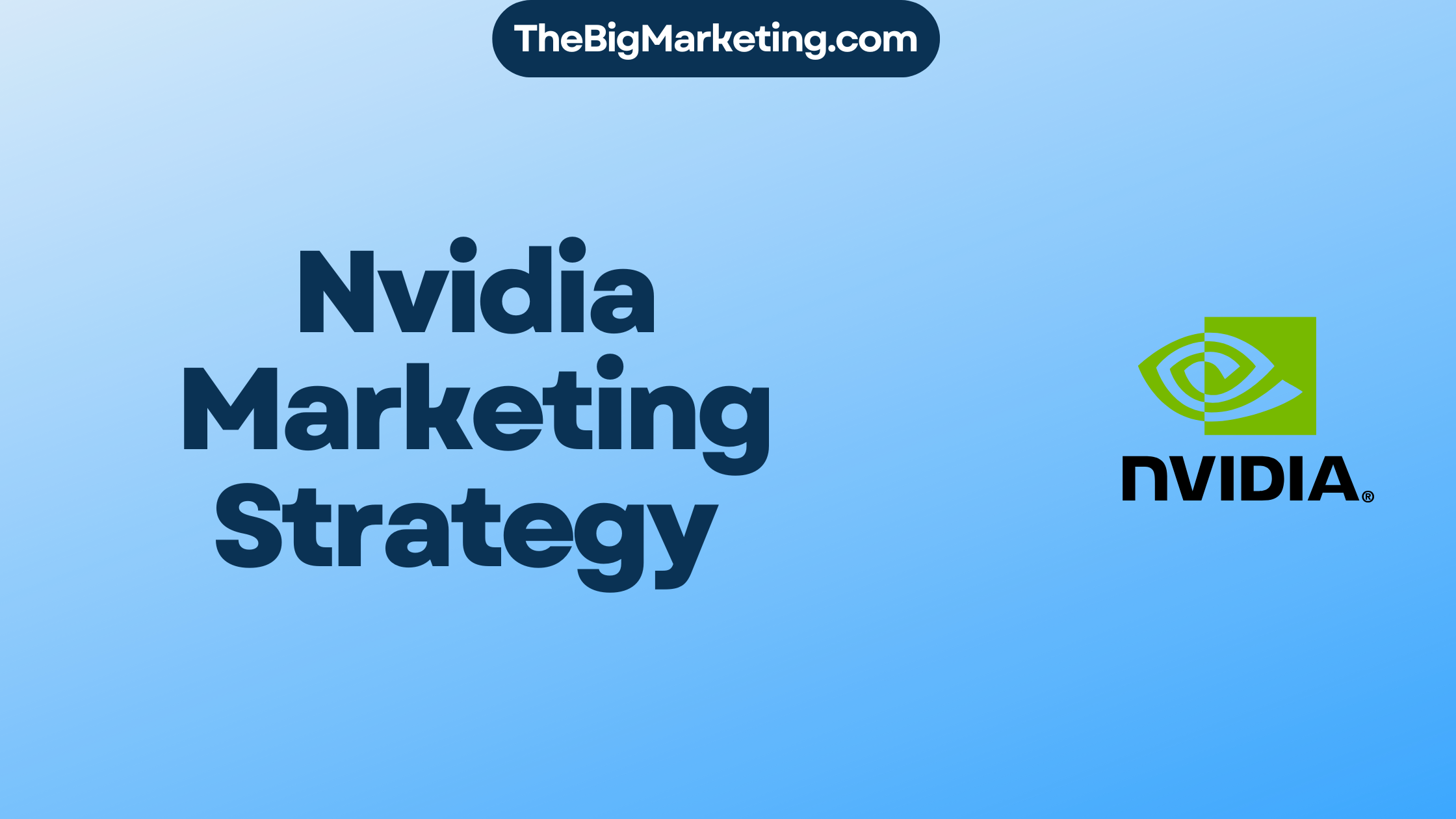Reverse marketing, also known as pull marketing or customer-initiated marketing, is a strategic approach that focuses on attracting consumers by providing valuable information and addressing their needs. Unlike traditional marketing, where companies actively push their products or services to potential customers, reverse marketing aims to build trust and create a compelling brand presence that motivates consumers to seek out the brand on their own.
Reverse marketing strategies involve creating engaging content, utilizing social media platforms, and catering to customer preferences and interests. By positioning your brand as an authority in your industry and consistently delivering value, you can establish a strong connection with consumers, encouraging them to choose your brand voluntarily.
Key Takeaways:
- Reverse marketing is a strategy that encourages consumers to seek out a product or company on their own.
- It focuses on building trust and creating a compelling brand presence that motivates consumers to choose the brand voluntarily.
- Reverse marketing involves creating valuable content, utilizing social media platforms, and catering to customer preferences and interests.
- Successful reverse marketing campaigns can be seen in examples like Patagonia’s “Don’t Buy This Jacket” campaign and Dove’s “Campaign for Real Beauty.
- Implementing reverse marketing requires transparency, addressing customer pain points, and using social media to consistently deliver value.
The Basics of Reverse Marketing
Reverse marketing is an innovative approach where businesses respond to the expressed interest of customers in their products or services. Unlike traditional marketing, which involves proactive promotion, reverse marketing focuses on customer demand and creating a customer-initiated interaction.
The key concept behind reverse marketing is to build trust and establish the brand as an authority by providing valuable content and addressing customer pain points. This customer-centric strategy centers around understanding and fulfilling customer needs, rather than pushing products or services onto potential customers.
Reverse marketing employs various strategies, including content marketing, social media listening, email marketing, lead nurturing, and permission marketing. By leveraging these strategies, businesses can engage with customers on a personal level, deliver relevant information, and build lasting relationships.
Content Marketing
Content marketing is a central component of reverse marketing. It involves creating and sharing valuable content that educates, entertains, or addresses customer needs and interests. Through targeted content, businesses can attract potential customers, establish credibility, and encourage them to take the next steps in their buyer’s journey.
Social Media Listening
Social media listening allows businesses to monitor and analyze customer conversations and feedback on social media platforms. By actively listening to what customers say about their brand, products, or industry, businesses can gain valuable insights into customer preferences, pain points, and expectations. This information can then be used to tailor marketing strategies and create content that resonates with the target audience.
Email Marketing
Email marketing is another effective strategy in reverse marketing. By building an opt-in email list and sending personalized emails to subscribers, businesses can nurture relationships, provide product updates, offer exclusive promotions, and deliver valuable content directly to customers’ inboxes. This allows for ongoing communication and engagement with interested customers.
Lead Nurturing
Lead nurturing involves building relationships with potential customers who have expressed interest in a brand’s products or services. Through targeted communication and personalized content, businesses can guide leads through the sales funnel, addressing their specific needs and concerns. This approach helps establish trust and positions the brand as a valuable resource, increasing the likelihood of conversion.
Permission Marketing
Permission marketing focuses on obtaining explicit consent from customers before delivering marketing messages or content. By asking for permission and respecting customer preferences, businesses can develop trust and create a positive customer experience. This approach ensures that marketing efforts are directed towards interested and engaged individuals, increasing the effectiveness of campaigns.
By implementing reverse marketing strategies, businesses can leverage customer demand and build lasting relationships. This customer-centric approach allows for personalized communication, valuable content, and the establishment of brand authority.
Examples of Successful Reverse Marketing Campaigns
Reverse marketing campaigns can be highly effective in building trust, raising awareness, and positioning brands as transparent and honest. Let’s take a look at two successful examples of reverse marketing campaigns:
Patagonia’s “Don’t Buy This Jacket” Campaign
In an unconventional approach, Patagonia launched the “Don’t Buy This Jacket” campaign to discourage people from purchasing their products. The company aimed to highlight the importance of economic sustainability and environmental sensibility. By urging consumers to consider the impact of their purchases, Patagonia positioned itself as a responsible and socially-conscious brand.
Dove’s “Campaign for Real Beauty”
Dove’s “Campaign for Real Beauty” challenged unrealistic beauty standards by featuring real women in their advertisements. The campaign aimed to empower women by showcasing diverse body types, ethnicities, and ages. By promoting authenticity and self-acceptance, Dove built a strong emotional connection with its target audience while positioning itself as an advocate for real beauty.
These successful reverse marketing campaigns demonstrate the power of authenticity and addressing broader societal issues. By engaging consumers on a deeper level, these brands were able to build trust, raise awareness, and foster long-lasting relationships.
Tips for Implementing Reverse Marketing
Implementing a successful reverse marketing campaign requires careful planning and execution. Here are some tips to help you effectively implement reverse marketing techniques:
Evaluate Your Business
Before launching a reverse marketing campaign, take the time to evaluate your business. Ensure that your company operates with transparency and trustworthiness. This means being honest with your customers and delivering on your promises. Assess your current marketing efforts and align them with the values and beliefs of your target audience.
Address Customer Pain Points and Beliefs
To attract and engage customers, it’s important to address their pain points and beliefs. Understand their needs and concerns, and tailor your messaging accordingly. Use reverse marketing techniques to offer solutions, provide valuable information, and demonstrate empathy. By addressing their pain points head-on, you can build trust and establish a strong connection with your audience.
Leverage Social Media
Social media platforms play a crucial role in reverse marketing. Consistently post valuable content that resonates with your target market. Use these platforms to engage with your audience, respond to inquiries, and build relationships. By providing valuable content and actively engaging with your audience, you can establish your brand as a trusted source of information.
Provide Value First
In reverse marketing, it’s important to provide value to your audience before asking for a sale. Build trust and credibility by offering free resources, educational content, or exclusive discounts. By providing value first, you demonstrate your expertise and establish a relationship of trust with your audience.
Create Brand Recognition
To implement successful reverse marketing techniques, it’s essential to make your brand instantly recognizable. Consistency in branding, messaging, and visual identity can help your audience identify and remember your brand easily. This includes using consistent brand elements across different platforms and maintaining a cohesive brand image.
| Benefits | Examples |
|---|---|
| 1. Higher Conversion Rates | 1. Orabrush’s YouTube campaign |
| 2. Customer-Centric Approach | 2. Walmart seeking out suppliers |
| 3. Cost-Effectiveness | 3. Weight Watchers’ campaign on healthy living |
| 4. Trust Building | |
| 5. Personalization |
Benefits of Reverse Marketing
Reverse marketing offers numerous benefits for businesses looking to engage with customers in a more targeted and effective way. By implementing reverse marketing strategies, companies can capitalize on existing demand, enhance customer trust, and personalize their marketing efforts to drive higher conversion rates.
1. Higher Conversion Rates
One of the primary benefits of reverse marketing is its ability to deliver higher conversion rates. By responding to customer demand and tailoring marketing efforts accordingly, businesses can increase the likelihood of customers choosing their products or services.
2. Customer-Centric Approach
Reverse marketing places the customer at the center of the marketing strategy. It prioritizes customer needs and preferences, ensuring that the communication and offerings are relevant and valuable to the target audience. This customer-centric approach helps build stronger relationships and foster brand loyalty.
3. Cost-Effective
Reverse marketing is a cost-effective strategy because it focuses on targeting interested parties rather than engaging in wasteful marketing efforts. By tailoring marketing messages to specific segments, businesses can optimize their resources and allocate their budgets more efficiently.
4. Trust and Credibility
Reverse marketing builds trust and credibility with customers. By respecting customer preferences and providing valuable content and offers, businesses demonstrate their commitment to meeting customer needs. This trustworthiness can lead to long-term customer relationships and positive brand associations.
5. Personalization
Reverse marketing allows for personalization in marketing efforts. By understanding individual customer preferences, businesses can tailor their messages and offerings to create a more personalized and engaging experience. Personalized marketing tends to resonate more with customers, increasing the chances of conversion and brand loyalty.
Overall, reverse marketing offers substantial benefits for businesses looking to enhance their marketing strategies. By focusing on customer demand, tailoring their efforts, and building trust and credibility, companies can achieve higher conversion rates, engage with customers on a deeper level, and drive long-term success.
Challenges of Reverse Marketing
Implementing a successful reverse marketing strategy entails overcoming various challenges that businesses face. These challenges include:
- Identifying and Prioritizing Interested Customers: One of the primary challenges is identifying the right customers who have not only shown interest but have the potential to convert into loyal customers. It requires analyzing data, understanding customer behavior, and segmenting the target audience effectively.
- Effectively Managing Customer Inquiries: As customers take the initiative in reverse marketing, businesses must ensure efficient management of customer inquiries. This includes promptly responding to queries, addressing concerns, and providing relevant information in a timely manner.
- Ensuring Timely and Relevant Responses: Customers expect timely and personalized responses in reverse marketing. Meeting these expectations requires businesses to have robust communication systems in place to handle customer interactions promptly and provide relevant solutions.
- Understanding Customer Behavior and Preferences: Reverse marketing heavily relies on understanding customer behavior and preferences. This necessitates thorough market research and analysis to gain insights into customers’ motivations, pain points, and decision-making processes. The challenge lies in accurately interpreting the collected data and translating it into effective marketing strategies.
Overcoming these challenges is crucial for the successful implementation of a reverse marketing campaign. By addressing these obstacles head-on, businesses can build a strong foundation for their reverse marketing strategies and maximize their potential for success.
Metrics for Reverse Marketing
Measuring the success of a reverse marketing campaign is crucial to understanding its impact on business growth. By tracking key metrics, businesses can evaluate the effectiveness of their reverse marketing efforts. Here are some important reverse marketing metrics to consider:
Conversion Rates
Conversion rates measure the percentage of customers who take the desired action, such as making a purchase or filling out a form. Calculate the conversion rate by dividing the number of conversions by the total number of visitors or leads. Monitoring conversion rates helps identify areas that require improvement and optimize the reverse marketing strategy.
Click-Through Rates
Click-through rates (CTRs) indicate the percentage of people who click on a specific link or call-to-action within a reverse marketing campaign. Higher CTRs suggest that the campaign message is resonating with the target audience and driving engagement. Analyzing CTRs helps refine and tailor future reverse marketing campaigns.
Engagement Levels
Engagement levels measure the level of interaction and interest generated by a reverse marketing campaign. It includes metrics such as social media likes, shares, comments, and website engagement. Engaging and interactive content is essential for capturing the attention of potential customers and driving them towards the desired action.
Lead Quality
Evaluating the quality of leads generated through reverse marketing is essential for maximizing the sales potential. Analyze lead quality based on factors such as lead source, engagement level, purchase history, and demographic information. By identifying high-quality leads, businesses can allocate resources more effectively and improve their overall conversion rates.
Customer Satisfaction Scores
Customer satisfaction scores provide valuable insights into the effectiveness of reverse marketing efforts. Surveys and feedback can help gauge customer satisfaction levels and identify areas for improvement. Satisfied customers are more likely to become brand advocates and make repeat purchases, contributing to business growth.
| Metric | Description |
|---|---|
| Conversion Rates | The percentage of customers who take the desired action |
| Click-Through Rates | The percentage of people who click on a specific link or call-to-action |
| Engagement Levels | The level of interaction and interest generated by the campaign |
| Lead Quality | Evaluation of the quality of leads generated through reverse marketing |
| Customer Satisfaction Scores | The measure of customer satisfaction levels |
The Concept of Reverse Marketing
Reverse marketing is a customer-driven approach that focuses on the proactive engagement of customers who express interest or consent to engage with a product or company. It revolves around customer demand and emphasizes personalization and tailoring responses to individual customer needs.
Unlike traditional marketing methods, reverse marketing allows businesses to establish connections with customers who are actively seeking their products or services. It is a permission-based marketing strategy that respects the preferences and choices of customers, enabling businesses to engage with them in a more meaningful and effective way.
By leveraging reverse marketing techniques, businesses can create a customer-centric experience that addresses the unique needs and preferences of their target audience. This approach emphasizes building trust, providing valuable content, and fostering long-term relationships.
Implementing reverse marketing involves leveraging customer insights, utilizing data analytics, and crafting personalized marketing campaigns. It requires businesses to understand customer behavior, align their messaging to customer needs, and deliver relevant and engaging content.
Through reverse marketing, businesses can cultivate a loyal customer base, improve customer satisfaction, and drive growth. By focusing on customer demand and delivering personalized experiences, businesses can establish themselves as trusted brands that customers actively seek out.
Components of Reverse Marketing
Reverse marketing encompasses various components that help businesses engage with their target audience and build strong customer relationships. These components include traditional methods of advertising, such as television advertisements, print magazine advertisements, and online media.
Television advertisements have long been a popular choice for reverse marketing strategies due to their broad reach and ability to captivate audiences. By showcasing their products or services through compelling visuals and messages, businesses can pique the interest of potential customers and encourage them to seek out more information.
Print magazine advertisements provide another avenue for reverse marketing. With carefully curated visuals and persuasive copy, businesses can attract the attention of readers and entice them to learn more. Whether it’s a full-page spread or a strategically placed ad, print advertisements offer an opportunity for businesses to connect with their target audience in a tangible and impactful way.
Additionally, online media plays a crucial role in reverse marketing. Through social media platforms, websites, and online advertisements, businesses can directly engage with their audience, provide valuable content, and address customer pain points. This digital presence allows businesses to showcase their expertise, build authority, and foster trust with consumers.
Moreover, reverse marketing extends beyond B2C markets and is also utilized in B2B markets. In these scenarios, buyers approach suppliers with their specific needs, creating a reversed dynamic where the customers take the lead. This approach allows suppliers to tailor their offerings to meet the precise requirements of the buyers.
Reverse marketing also aligns with supply chain management principles. By implementing reverse marketing strategies, businesses can streamline their supply chains, reduce redundancies, and cut costs. Through efficient communication and collaboration between buyers and sellers, conflicts can be minimized, and strong relationships can be nurtured.
In summary, the components of reverse marketing encompass traditional advertising methods, online media platforms, B2B market dynamics, and supply chain management principles. By leveraging these components, businesses can create effective reverse marketing campaigns that resonate with their target audience, foster trust, and drive meaningful engagement.
Insert Image Here
| Traditional Methods of Advertising | Online Media | B2B Market Dynamics | Supply Chain Management Principles |
|---|---|---|---|
| Television Advertisements | Social Media Platforms | Buyers Approaching Suppliers | Efficient Communication and Collaboration |
| Print Magazine Advertisements | Websites | Customized Offerings | Streamlined Supply Chains |
| Online Advertisements | Reduced Redundancies and Costs |
Successful Reverse Marketing Examples
Reverse marketing has proven to be a powerful strategy for building brand loyalty, reaching target markets, and reinforcing brand messages. Let’s explore some successful reverse marketing examples that have made a significant impact:
1. Orabrush’s Comedic YouTube Campaign: Orabrush, a company that sells tongue cleaners, launched a humorous YouTube campaign to educate consumers about the importance of tongue hygiene. The videos featured a character named Morgan, who entertained viewers with witty and entertaining content while promoting the Orabrush product. This reverse marketing approach successfully garnered millions of views and cultivated a dedicated fan base.
2. Walmart Actively Seeking Out Suppliers: Walmart, one of the world’s largest retail chains, embraces reverse marketing by actively seeking out suppliers. They encourage small businesses and entrepreneurs to pitch their products directly to Walmart buyers through programs like the “Open Call” initiative. This approach allows Walmart to tap into the diverse range of products available in the market while supporting local businesses.
3. Weight Watchers’ Campaign Focusing on Healthy Living: Weight Watchers adopted a reverse marketing strategy by shifting its focus from weight loss to overall health and well-being. Their campaigns emphasize healthy living, positive self-image, and making sustainable lifestyle changes, rather than solely promoting a weight loss product. By taking this customer-centric approach, Weight Watchers successfully transformed their brand perception and resonated with a wider audience.
These successful reverse marketing campaigns demonstrate the effectiveness of this strategy in capturing consumer attention, building trust, and creating long-term brand loyalty. By prioritizing customer needs, engaging with customers on their terms, and delivering valuable content, these brands have succeeded in making a lasting impact in their respective markets.
| Company | Campaign | Objective | Results |
|---|---|---|---|
| Orabrush | Comedic YouTube Campaign | Educate consumers about tongue hygiene | Millions of views, dedicated fan base |
| Walmart | Actively Seeking Out Suppliers | Diversity of product offerings, support local businesses | Increased product variety, strengthened relationships with suppliers |
| Weight Watchers | Campaign Focusing on Healthy Living | Shift brand perception to emphasize overall health | Expanded target audience, improved brand relevance |
Conclusion
Reverse marketing is a customer-centric approach that prioritizes customer needs and preferences in marketing efforts. By focusing on building trust, enhancing conversion rates, and creating personalized campaigns, businesses can establish long-term success in the competitive market. Responding to existing demand and engaging with interested customers is key to driving brand loyalty and achieving sustainable growth.
To implement reverse marketing effectively, businesses must have a deep understanding of customer behavior and preferences. Communication strategies should be tailored to address customer pain points and beliefs, ensuring transparency and trustworthiness. Utilizing various tools and metrics, such as conversion rates and customer satisfaction scores, enables businesses to measure the success of their reverse marketing campaigns and make data-driven decisions.
Overall, reverse marketing allows businesses to create meaningful connections with their target audience and deliver valuable content that resonates with their needs and interests. By embracing this customer-centric approach, businesses can foster trust, drive engagement, and achieve long-term success in the ever-evolving marketing landscape.






